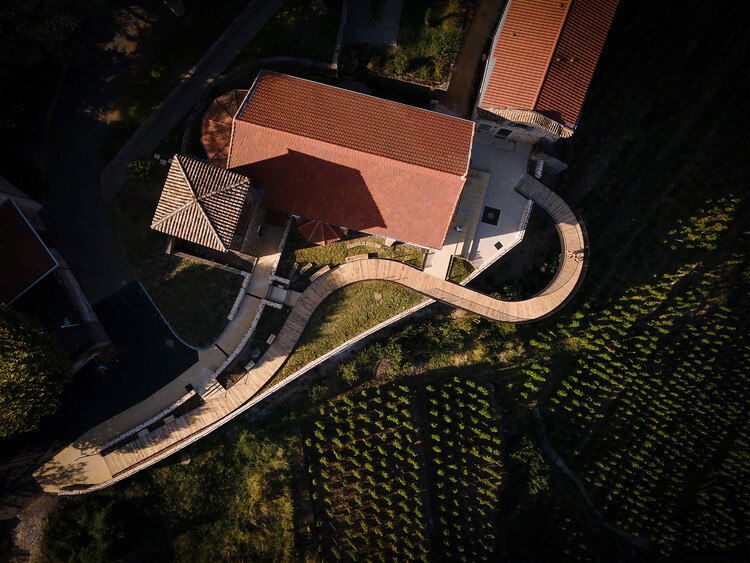Text description provided by the architects. Introduction – At the gateway to the Pilat Regional Natural Park, the village of Tupin-et-Semons boasts a remarkable geographical location that shapes its identity. It is known for its terraced vineyards with prestigious appellations like Condrieu and Côte-Rôtie. More broadly, it offers a spectacular panorama on the Rhône, the market garden plains, and beyond, the Alps chain from the Mont Blanc to the Vercors. Naturally, Vienne Condrieu Agglomération chose Tupin-et-Semons for its first belvedere in a future network as part of its new tourism plan. The creation of the Belvedere reflects a strong desire to create a high-value cultural and tourism offering. It aims to be an iconic, attractive, and event-driven work.
The relationship between architecture and naval design has been a fascinating interplay of form and function that has evolved significantly. Both disciplines have a shared history of innovation, aesthetics, and functionality that have informed and inspired each other. This “love affair” has seen architects drawing inspiration from boats, particularly in the modernist era when ships’ streamlined, efficient designs influenced the aesthetic of buildings. Conversely, architectural principles have also been adapted to enhance the functionality and form of boats, demonstrating a reciprocal exchange that continues to shape both disciplines.
Architects’ fascination with boats can be traced back to the early 20th century when the concept of efficiency in design became a central theme in architecture and naval construction. The rise of industrialization and the advent of modern materials and technologies spurred a new wave of thinking that prioritized function and streamlined form. Boats, as highly engineered objects optimized for performance and efficiency, became a natural source of inspiration for architects seeking to embody these ideals in their buildings. This was particularly evident in the work of Le Corbusier, who famously declared that “a house is a machine for living” echoing the functionalist approach of naval architecture where every element of a vessel serves a specific purpose. In his seminal 1923 book “Towards a New Architecture”, Le Corbusier juxtaposed images of Cunard ocean liners with classical buildings, presenting the ships as ideals of modern design principles. This nautical aesthetic deeply influenced Modernist architecture, emphasizing clean lines, open floor plans, and sun-drenched spaces reminiscent of a ship’s deck.
The influence went both ways, as architects began applying their skills to boat design. Le Corbusier himself designed a floating homeless shelter called the Louise-Catherine, the “Floating Refuge”. Designed in 1929, this project transformed a simple canal barge into a modernist space, embodying the principles of efficiency and simplicity that were the hallmarks of naval design. Le Corbusier’s approach to this project reflected his belief in the potential of architecture to create efficient, adaptable spaces, much like the efficient use of space aboard a ship. This project not only showcased the influence of naval architecture on his work but also highlighted how the principles of boat design could be reimagined in the context of urban architecture.





More Stories
Cowboy_prank in Melbourne and Brisbane . super funny reactions. lelucon statue prank. luco patung
‘Who are you?’ An artist confronts photos of her father’s past lovers
Christie’s First 21st Century Day Sale at New Hong Kong HQ Sees Middling Results